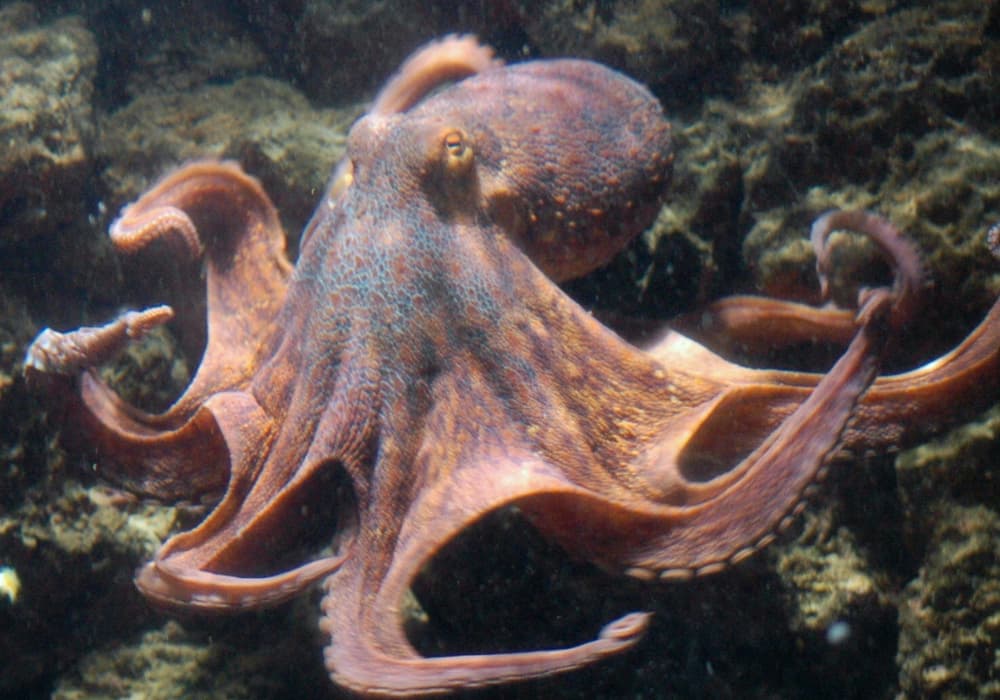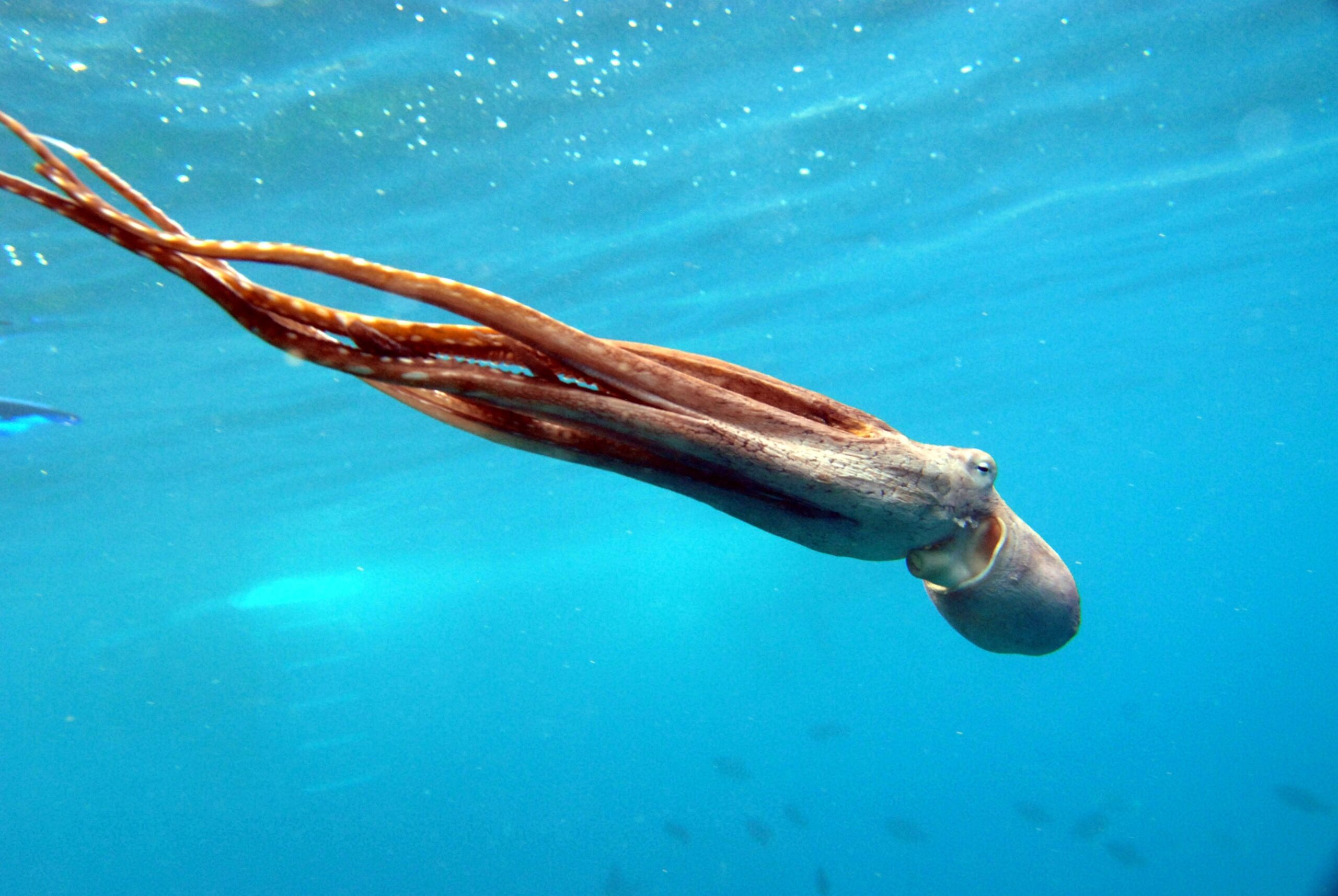Among the multiple locomotion methods, the most notable are jet propulsion, crawling, and two-legged walking. Each mode of transportation serves a specific purpose and highlights the octopus’s ability to adjust to various situations.
Key points about octopus locomotion:
- Jet propulsion, crawling, and two-legged walking are the main forms of locomotion.
- Diverse locomotion techniques allow for adaptation to different environments.
- Locomotion adaptations contribute to successful predation and escape strategies.
- Camouflage is a vital part of their escape strategy when combined with the appropriate form of locomotion.
Jet propulsion enables the octopus to move at impressive speeds, which comes in handy when escaping potential predators or capturing prey. By rapidly expelling water through a specialized siphon, the animal propels itself forward like a living torpedo. This method is both efficient and versatile, allowing the octopus to cruise through the water column or quickly change directions.
In contrast, crawling and two-legged walking offer a slower, more controlled form of locomotion, ideal for exploring their surroundings and foraging. Utilizing their eight flexible arms, the octopus can gracefully glide across the seafloor, deftly navigate complex terrain, and cling to various surfaces.
Two-legged walking, on the other hand, involves the animal using two elongated arms as makeshift stilts and presents a more energy-conserving way of moving over short distances. With such a diverse range of locomotion abilities, the octopus can easily maneuver in the trickiest of environments.
Octopus Locomotion Overview
Jet Propulsion
One primary method of octopus locomotion is jet propulsion. This unique method involves the octopus quickly expelling water from its mantle cavity through a structure called the siphon. This action propels the octopus in the opposite direction of the water flow. Jet propulsion is particularly useful when octopuses need to escape from predators or move rapidly over short distances.
Crawling
Another form of movement in octopuses is crawling, which they achieve by using their eight long, flexible arms. They employ muscular contractions in their arms to produce a wave-like motion, enabling the octopus to move across the seafloor or other surfaces with ease. Crawling is a common way for octopuses to navigate through small, rocky habitats or perform tasks such as hunting for prey.
Two-Legged Walking
A less common, but fascinating method of octopus locomotion is two-legged walking. Some octopuses, such as the Abdopus species, have been observed using only two arms to “walk” across the seafloor while keeping the other six arms tightly wrapped around their body.
This unique form of bipedal locomotion allows them to move in a more energy-efficient manner, particularly when searching for food or moving through complex environments.
Jet Propulsion Mechanism
Octopuses use various modes of locomotion, with jet propulsion being one of the most fascinating methods. This section discusses the mechanism behind jet propulsion and its energy efficiency, speed, and water intake and direction.
Water Intake and Direction
The octopus draws water into its mantle cavity using its siphon. This muscular contraction forces the water to flow through a narrow tube-like structure. Octopuses can control the direction of the water flow by adjusting the position of the siphon, allowing them to move in different directions. They primarily use jet propulsion to escape predators or cover large distances quickly.
Energy Efficiency
Although jet propulsion provides an effective way to move rapidly in the water, it is not the most energy-efficient method for the octopus. Crawling and walking are comparatively more energy-efficient forms of locomotion. However, the octopus can regulate the force and duration of the water expulsion to optimize energy consumption during jet propulsion.
Speed
The speed of the octopus in jet propulsion varies depending on factors such as water pressure, siphon diameter, and the force of mantle contractions. Typically, an octopus can reach speeds of up to 25-35 km/h (15-22 mph) using jet propulsion. However, they cannot maintain these speeds for prolonged periods due to the associated energy expenditure.

Crawling Locomotion
Arm Coordination
Octopuses exhibit remarkable crawling locomotion abilities. Their arm coordination is key to this form of movement. Each of the eight arms functions independently, providing the octopus with an unparalleled level of flexibility. The arms are controlled by a complex nervous system, allowing them to extend, contract, and twist to achieve various crawling strategies. In this manner, they can rapidly coordinate their arms to effectively move across various surfaces.
- Independent arm movement: Each arm functions independently, providing flexibility and adaptability in movement.
- Complex nervous system: The arms are controlled by a vast nervous system, allowing for precise coordination.
Adaptive Terrain Movement
The crawling locomotion of octopuses also enables them to adapt to different terrains effortlessly. They can move across complex surfaces such as rocks, coral, and sand, often blending with their surroundings through their renowned camouflage abilities. This adaptability is not just the result of their brilliant coordination, but also their exceptional proprioceptive senses.
To navigate their surroundings, octopuses may employ different crawling strategies:
- Push-pull motion: Some octopuses push and pull using several arms, while the others maintain a grip on the terrain, increasing stability.
- Wave-like motion: In this strategy, the octopus moves its arms in a wave-like motion, propelling itself across the surface.
The adaptive terrain movement allows octopuses to seamlessly transition between substrates and efficiently move in their natural habitat.
- Camouflage abilities: Octopuses blend with their surroundings as they crawl, offering protection from potential predators.
- Proprioceptive senses: Their exceptional sense of self-movement and body position enables the octopus to adapt to varied terrains efficiently.
Two-Legged Walking
Bipedal Locomotion
Octopuses exhibit a unique form of movement called two-legged walking, which is a type of bipedal locomotion. This fascinating skill allows them to travel over various terrains by propelling themselves using two of their eight arms. By coordinating the muscles in their arms and the suction cups on each arm, they can maintain a steady pace and navigate challenging surfaces.
The two-legged walking is often observed in specific species like the Octopus aculeatus and Abdopus genus. Although not as common as jet propulsion or crawling, this method of locomotion provides the octopus with an efficient means of travel without exhausting its energy resources.
Role of Arms in Balance
The octopus relies on its arms for balance and stability during bipedal locomotion. The two arms in use create a tripod-like support structure, with the body of the octopus acting as a counterbalance. The other six arms help maintain the center of gravity while the octopus moves, and they can be quickly engaged if needed for additional support or to prevent a fall.
While walking on two legs, the octopus relies on the following components:
- Hydrostatic Skeleton: The octopus’ muscular hydrostat provides stability and force to the arms during locomotion.
- Proprioception: The octopus can sense the position and movements of its arms, allowing it to make necessary adjustments to maintain balance.
- Suction cups: These are crucial for securing the octopus to the surface as it moves, providing necessary grip and traction.
By utilizing a combination of these components, the octopus can successfully navigate a variety of surfaces during two-legged walking.
Evolutionary and Behavioral Significance
Predation and Escape Strategies
In addition to their locomotion adaptations, octopuses have evolved a variety of predator avoidance mechanisms and hunting strategies. Jet propulsion is often used as an escape tactic, allowing them to rapidly flee from threats. On the other hand, crawling and two-legged walking enable silent, stealthy approaches towards their prey.
Camouflage is another critical aspect of their predation and escape strategies. Octopuses can change their color, pattern, and texture to blend in with their surroundings seamlessly, making them virtually invisible to both predators and prey.


